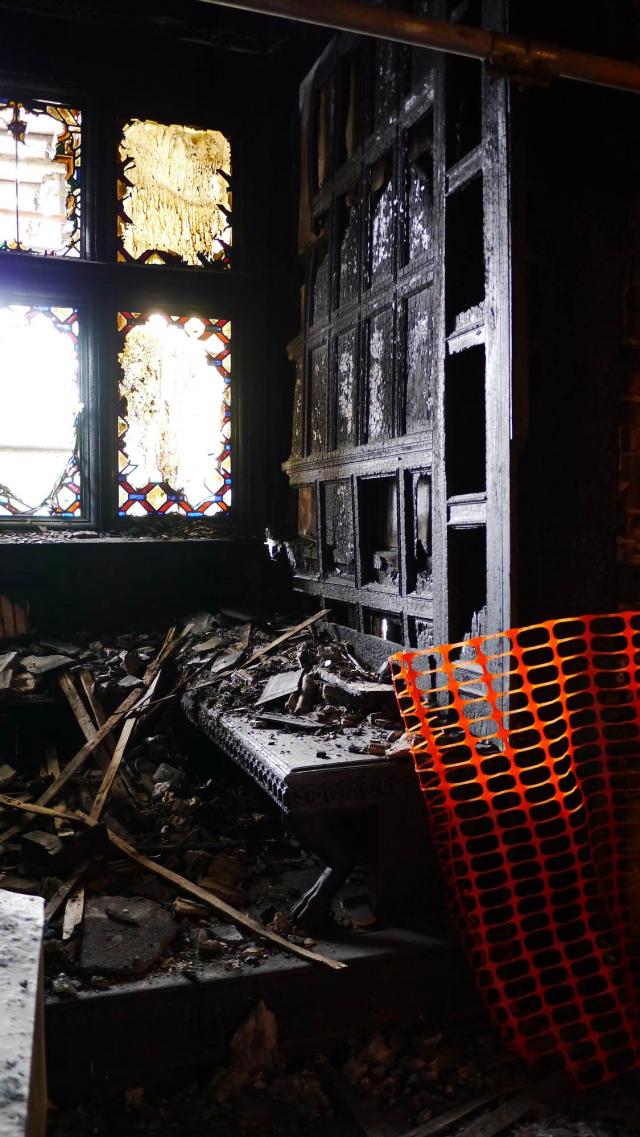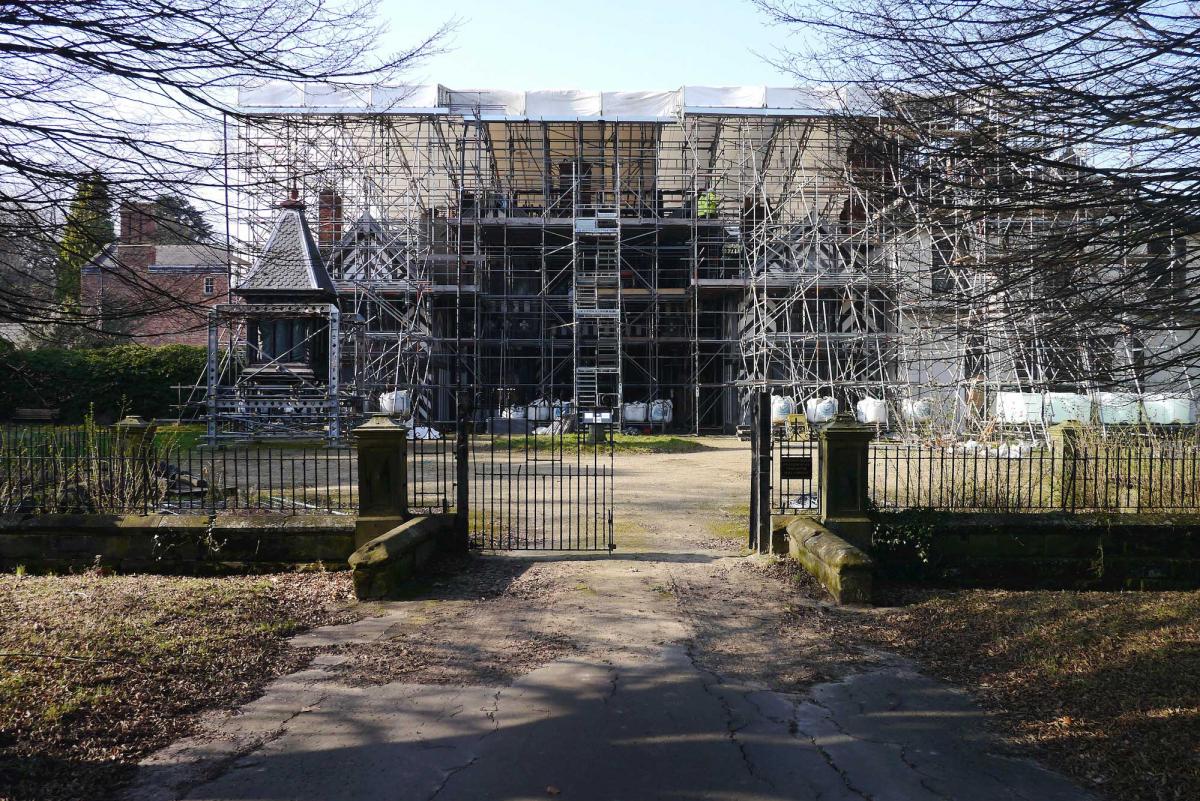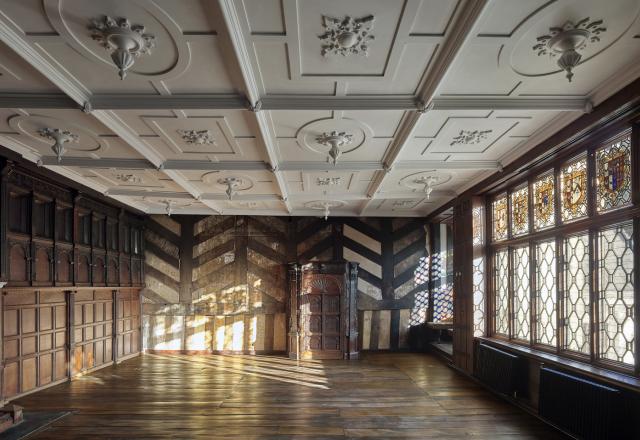Restoring a historic building that has been damaged by fire presents a unique and complex set of challenges. Director, Neal Charlton, explains how we balance preserving the past with creating a future for the building.


When dealing with a historic building in the aftermath of a fire, knowing what’s left is crucial to understanding what the building’s future looks like.
Best practice conservation is based on in-depth inspection and documentation, so once the building is water-tight and structurally safe, we work with archaeologists to comb through the debris to identify surviving features of architectural and historic importance.
From charred timbers to fragments of glass, every item is recorded and analysed by specialist experts. This work both establishes the condition of the remaining structure and helps us to understand more about the building’s construction, which can help inform the restoration process.
Although devastating, some things can be gained after a fire.

The extensive research that follows can reveal historic detail that may have not otherwise been brought to light. Similarly, as is typical for buildings that have survived several centuries, many have undergone a series of change during their lifetimes.
In some case, however, previous adaptations have been of poor quality or have masked elements of significant historic interest over time. The investigations offer an opportunity to find and correct these issues and help safeguard the building for the future.
Once all the investigations are complete, our role as architects is to use this assembled knowledge to understand the value of the surviving features and consider how they contribute to the significance of the remaining building to develop a strategy for the building’s next phase of life.
For example, at Wythenshawe Hall – the Grade II* listed Tudor manor house damaged by fire in March 2016 – the philosophy of the repair project is to retain and repair as much material as possible.
This will involve the repair of character defining elements using traditional materials and construction techniques. Where we know that historic detail has been lost entirely, we will faithfully recreate these features.
Equally, when little of the building remains, or the perhaps the features that survive are of low historic value, the preferred solution may be to create a new structure that incorporates the remaining elements, so the building’s past continues, in part, to shape its future.


Every building and every case is different. As a practice, we are currently working on three fire-damaged buildings and with each of these projects, we work in partnership with the owners, statutory consultees, and stakeholders to identify a solution that is both appropriate for the building, and that fulfils the wants and needs of these different groups.
Many of the buildings we work with are much loved and well-known parts of a community so through considerate conservation, ongoing consultation, and innovative, sensitive solutions we can deliver projects that bring these buildings back into use and give them a place in our future.

